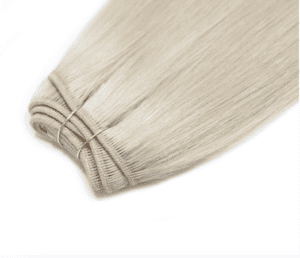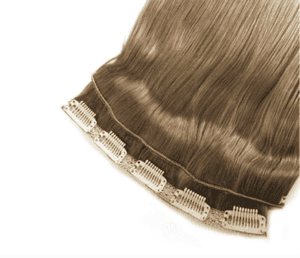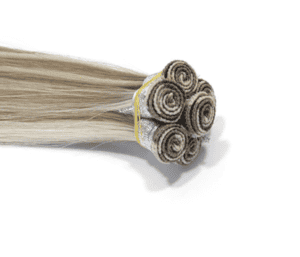Hair extensions are a popular way to add length, volume, and style to your hair. With so many different types of hair extensions available, it can be overwhelming to choose the right one for your needs. In this guide, we’ll provide a beginner’s overview of the different types of hair extensions, including their pros and cons, to help you make an informed decision.
1. Clip-In Hair Extensions
Clip-in hair extensions are the most popular and user-friendly type of hair extension. They are easy to use and can be added or removed in just a few minutes.
Pros and Cons
Pros:
Easy to use
Can be added or removed quickly
No damage to natural hair
Cons:
May not be as secure as other types of extensions
Limited styles and lengths available
How to Use Clip-In Extensions
Clip-in extensions come in small wefts that are secured to your natural hair using small clips. They can be placed in various locations on the head, depending on the desired style.
2. Tape-In Hair Extensions
Tape-in hair extensions are a popular choice for those who want a more permanent extension. They are attached to the hair using double-sided tape.
Pros and Cons
Pros:
More secure than clip-in extensions
Last longer than clip-in extensions
Can be styled like natural hair
Cons:
Can be more difficult to remove than clip-in extensions
Can cause damage to natural hair if not installed correctly
How to Use Tape-In Extensions
Tape-in extensions come in small wefts with double-sided tape attached. The wefts are placed near the root of the hair and secured using a heated tool.
3. Sew-In Hair Extensions
Sew-in hair extensions are also known as weaves. They are attached to the natural hair by sewing the extensions to a braided base.
Pros and Cons
Pros:
Long-lasting
Can be styled in various ways
Can add significant length and volume
Cons:
Can cause damage to natural hair if not installed correctly
Can be uncomfortable to wear
How to Use Sew-In Extensions
Sew-in extensions require braiding the natural hair in a specific pattern to create a base. The extensions are then sewn onto the base using a needle and thread.
4. Fusion Hair Extensions
Fusion hair extensions use a keratin bond to attach the extensions to the natural hair.
Pros and Cons
Pros:
Last longer than other types of extensions
Look more natural than other types of extensions
Can be styled like natural hair
Cons:
Can be expensive
Can cause damage to natural hair if not installed correctly
How to Use Fusion Extensions
Fusion extensions use a heated tool to melt the keratin bond and attach the extensions to the natural hair.
5. Micro Link Hair Extensions
Micro link hair extensions, also known as micro bead or micro loop extensions, use small metal beads to attach the extensions to the natural hair.
Pros and Cons
Pros:
No heat or glue was used in the installation
Can be easily adjusted or removed
Cons:
Beads may be visible in certain hairstyles
Can cause damage to natural hair if not installed correctly
How to Use Micro Link Extensions
Micro link extensions use small metal beads that are threaded onto the natural hair. The extensions are then looped through the beads and clamped down with a special tool.
Conclusion
Choosing the right type of hair extension can be a daunting task, but by understanding the pros and cons of each type, you can make an informed decision that meets your needs. Whether you’re looking for a temporary style update or a long-lasting transformation, there is a hair extension type that is right for you.
FAQs
1. Can I use heat styling tools on all types of hair extensions?
It depends on the type of extension. Clip-in extensions and micro link extensions can usually be heat-styled, but tape-in, sew-in, and fusion extensions should be styled with caution.
2. How long do hair extensions typically last?
The lifespan of hair extensions depends on the type of extension, the quality of hair, and how well they are cared for. Generally, clip-in extensions can last up to a year, while other types of extensions can last up to six months.
3. Can hair extensions be dyed or colored?
It depends on the type of extension and quality of hair. Virgin hair extensions can usually be dyed or colored, but synthetic or low-quality extensions may not be able to withstand the process.
4. Can hair extensions cause damage to my natural hair?
Yes, hair extensions can cause damage to natural hair if not installed or cared for properly. It’s important to choose a reputable stylist and follow the care instructions provided by the manufacturer.
5. How do I know which type of hair extension is right for me?
Consider your hair type, lifestyle, and desired look when choosing a type of hair extension. Consult with a reputable stylist for personalized recommendations.








